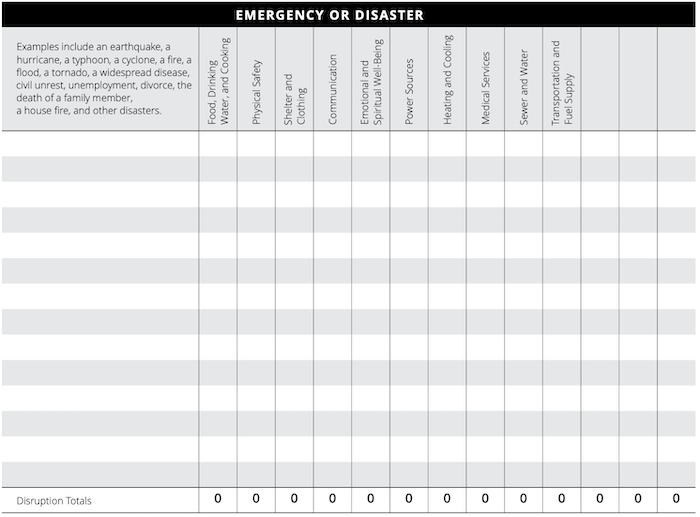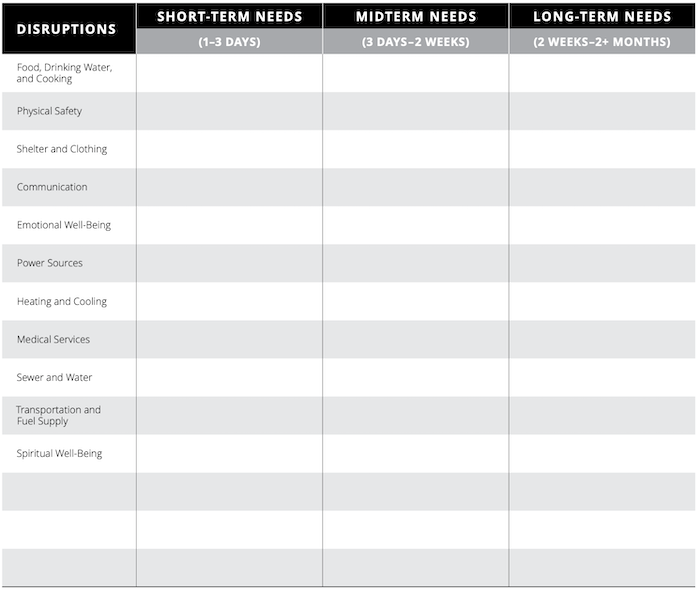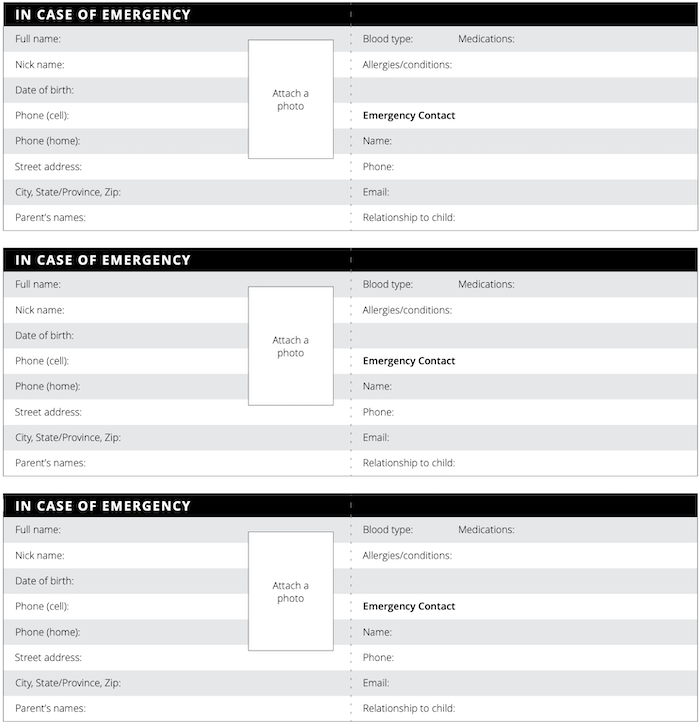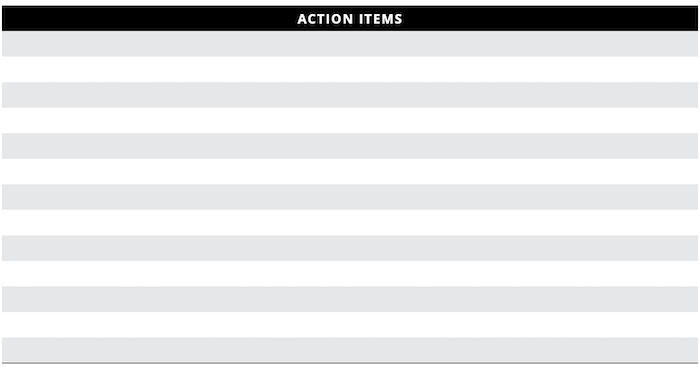Resources
Personal and Family Emergency Preparedness Planning
We have been counseled to be prepared for personal and large-scale disasters. This preparedness includes sustaining life with food storage and a water supply and extends to planning for reunification after a disaster, communication with family members, mental and emotional preparation, and many other considerations.
This planning guide can help you create or update personal and family emergency response plans. Your emergency plan should be coordinated with ward, stake, and community plans. The most effective plans are simple and brief. As a family or individual, you should review and update this plan regularly. With the following steps and accompanying work sheets, you should be able to:
- Evaluate disasters and disruptions
- Plan for disruptions
- Develop a communications plan
- Create a reunification plan
- Plan for special needs
- Create a list of action Items for things that require further preparation
The first step of emergency and disaster preparation is to educate yourself and your family about what a disaster is, which are most likely to occur (depending on your geographical location), how they may disrupt your daily activities or routine, and what you can do to prepare for them. Don’t forget to discuss emergencies that occur on a family level such as unemployment or the death of a loved one. Consider the following as you build your own emergency plan.
Prior to a disaster:
- Find a location for storing and accessing important family documents, emergency funds, survival and emergency supplies, and food storage
- Set up a safe family gathering place that coincides with the ward and stake or community reunification plans
- Establish ways to communicate with each other about your safety in case you are separated during the disaster.
- Make an Emergency Information Card for any children in your home with basic identification, medical and contact information, and information to stay in contact in a disaster.
- Pack an emergency bag for each member of the family with things such as: basic hygiene items, clothing, a light source, snacks, activities, and a comfort item to help children feel safe.
Immediately after a disaster:
- Help to locate and reunite family members who have become separated from the rest of the family. Attend to any immediate needs. Determine and report to ministering brothers or sisters or other Church leadership the condition of each family member.
- Obtain medical care for those who have been injured or who have other health challenges.
- Ensure you have access to a supply of basic provisions and services—such as food, temporary shelter, sanitation, and clothing.
Soon after a disaster:
- Provide assistance to family members who are suffering, have damaged shelter or belongings, or who are experiencing emotional trauma or loss of livelihood.
Disaster and Disruption Review
List the disasters that are most likely to happen where you live. Make sure to think about natural disasters as well as human-made events.
For each type of disaster, identify specific things that would be disrupted. (For example, disasters like earthquakes, fires, floods, or hurricanes damage homes, so shelter would be one thing affected.)
Consider personal or family disasters as well. These types of disasters might include things like a job loss, a house fire, serious illness, the loss of a spouse, school lock-downs, closure of child care or schools, relocation, or separation from family.
The worksheet will help you see the areas of your life most likely to be disrupted by a disaster. Then you can start planning for how to support disruptions to those areas.

Planning for Disruptions
Use this worksheet to plan for immediate and long-term needs. Identify the resources you will need in each time frame. For example, imagine the disruption is to your shelter. A short-term need could be using a meetinghouse, a midterm need could be staying with friends or family members, and a long-term need could be repairing your home or buying a new one. Use the Take Action section to plan for any needs you might have.

Communication Plan
Create a communication plan for contacting people in an emergency. It’s good to have a list of family members, friends, neighbors, Church leaders, and community resources. Consider memorizing phone numbers in case your contact list is unavailable. Plan other ways to make contact if you can’t make a phone call. This might mean texting, instant messaging, or posting on social media. After a disaster, it can be hard to make calls within the area. It’s often easier to make long distance calls. Designate a relative in another city to be an out-of-town contact. Plan for all family members to contact that person. They can tell their condition and location to the out-of-town contact, who can help relay information.

Reunification Plan
Designate a safe place where you and your family can find each other after an emergency. It is also a good idea to pick an alternate place. Gathering places may change depending on the disaster or where you are when the disaster happens. For example, if you’re at school, you may not be able to come to the safe place near your home. Your gathering place should be somewhere where children can find a trusted adult. Each ward and stake should also have a gathering place for reuniting families.

Family Emergency Contact Cards
In case of emergency, Family Emergency Contact Cards help first responders contact your family. These first responders could be paramedics, fire-fighters, police officers, or hospital personnel. Fill out an Emergency Contact Card for each of your family members. Then cut the card out and fold it in half. Encourage family members to carry this with them all the time. You can put the card in your wallet or a child’s backpack or diaper bag. It is helpful to also keep one in your car. Check your emergency contact information to keep it updated.

Special Needs to Consider
Identify any special needs your family has. What will you need in an emergency to meet those needs? Think about medications, wheelchair assistance, oxygen, allergy considerations, and so on. Consider the unique needs of children and the elderly. Do any family members have limited mobility or special food and supply needs? Do any family members have a limited ability to speak and identify themselves or others if separated? Use this worksheet to identify the needs and then plan who will take care of those needs.

Take Action
As you complete your emergency plan, you may find that there are areas in which you do not have the information or resources you need. Use this Action Items section to identify next steps to complete your plan.

